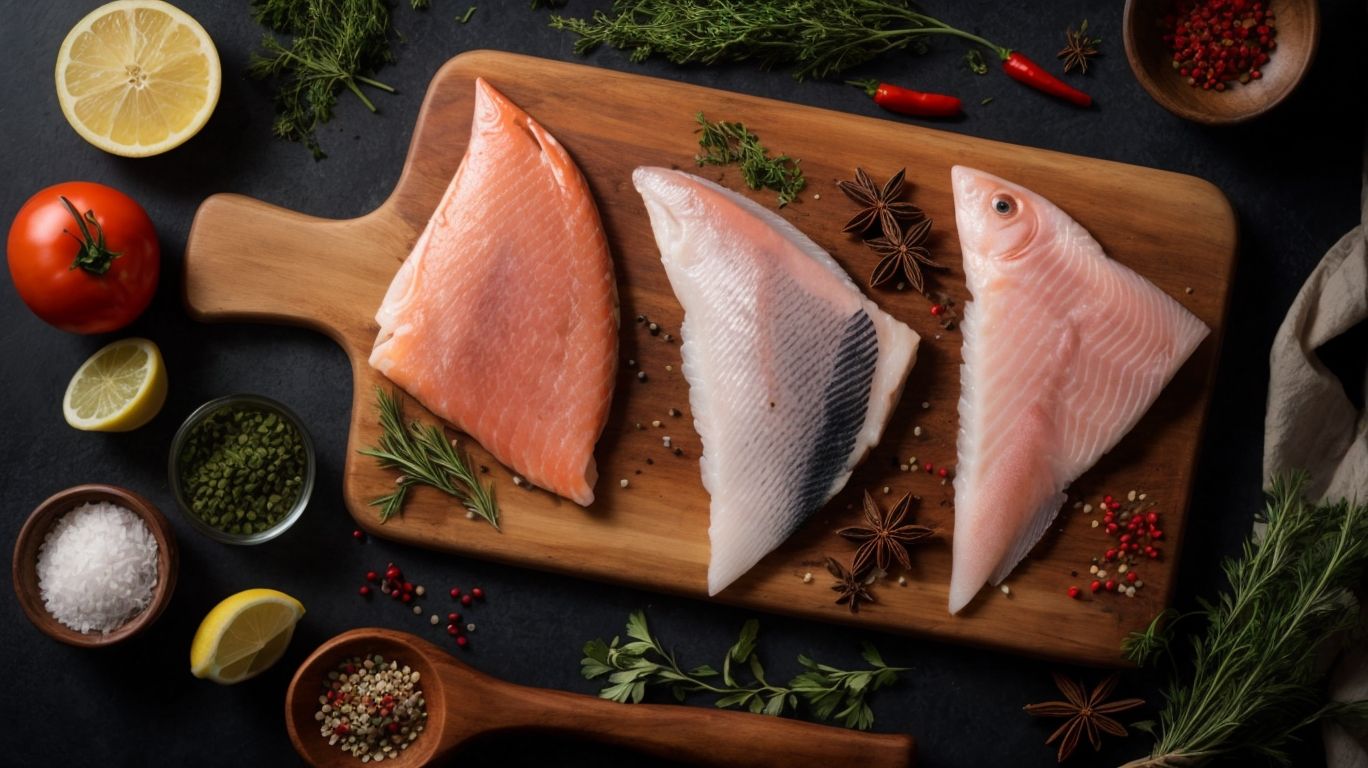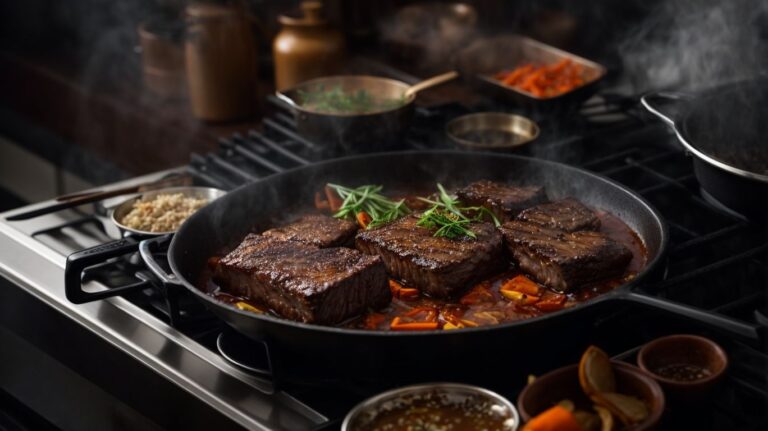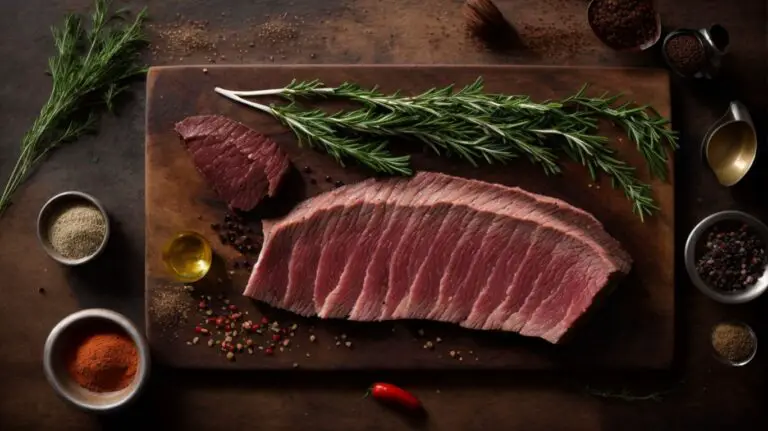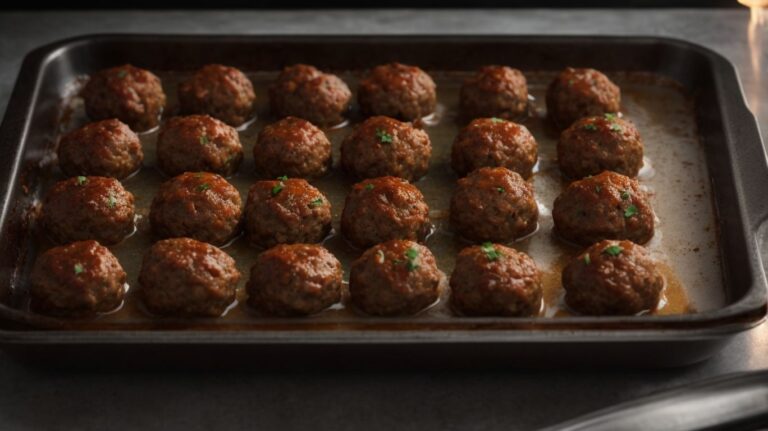How to Cook Fish From Frozen?
Are you looking to save time in the kitchen without compromising on flavor and freshness? Cooking fish from frozen might just be the solution you’ve been searching for!
In this article, we’ll explore the reasons why cooking fish from frozen is both convenient and safe, as well as which types of fish are best suited for this method.
We’ll also provide you with helpful tips on how to properly thaw frozen fish and various methods for cooking it to perfection. Stay tuned for expert advice and delicious recipes from award-winning culinary blogger, Chris Poormet!
Key Takeaways:
Why Cook Fish From Frozen?
Cooking fish from frozen can be a time-saving and convenient option for home cooks with busy schedules or limited access to fresh seafood.
One of the key benefits of cooking frozen fish is the convenience it offers. With frozen fish readily available in most grocery stores, home cooks can save time by skipping the thawing process and cooking the fish straight from the freezer.
Cooking fish from frozen allows for greater flexibility in meal planning. Whether it’s a last-minute dinner idea or a pre-planned meal, having frozen fish on hand provides quick and easy access to a nutritious protein source.
Convenience
Cooking frozen fish provides a convenient method of meal preparation using various cooking appliances such as ovens, air fryers, pans, and more.
Baking frozen fish is a hassle-free way to lock in moisture and flavor. Preheat the oven to the recommended temperature, place the fish on a baking sheet lined with parchment paper, season it to your liking, and bake until it reaches the desired doneness.
Air frying is another quick and healthy option for cooking frozen fish. Simply preheat the air fryer, place the fish fillet in the basket, spray with a bit of oil, season, and air fry for a few minutes until crispy and cooked through.
Pan-searing frozen fish on the stove is perfect for achieving a deliciously crispy exterior. Heat a pan with oil, add the fish, season, and cook until golden brown on each side. This method is ideal for those who prefer a crispy texture.
Safety
Cooking frozen fish ensures safety by controlling the temperature during thawing, seasoning, and cooking fillets to perfection.
Thawing fish properly is crucial to avoid bacterial growth, which occurs between 40°F and 140°F. To defrost, it is recommended to place the fish in the refrigerator overnight or use a cold-water bath.
- Seasoning is key to enhancing the fish’s natural flavors. Common choices include lemon, herbs like dill or parsley, and spices such as garlic powder or paprika.
- When handling fillets, use a gentle touch to prevent breakage. Pat them dry before applying seasonings to ensure adherence.
Cooking at the correct temperature, typically around 375°F for most fish, ensures it is thoroughly cooked, safe to eat, and delicious. Ensure the internal temperature reaches 145°F to avoid any health risks.
Retains Freshness
Cooking fish from frozen helps retain its freshness by ensuring the right cooking time, internal temperature, crispiness, and minimal oil usage.
When cooking frozen fish, it is crucial to pay attention to the cooking time to prevent overcooking, which can lead to dry and rubbery texture. To achieve optimal results, aim for an internal temperature of 145°F (63°C) for most fish varieties. Using a meat thermometer is advisable to ensure the fish reaches the correct doneness.
To enhance the texture and achieve a crispy exterior, try baking or air frying the fish instead of deep-frying. This method can give you a satisfying crunch without the need for excessive oil. Consider adding a light coating of breadcrumbs or herbs to further enhance the flavor profile.
What Types of Fish Can Be Cooked From Frozen?
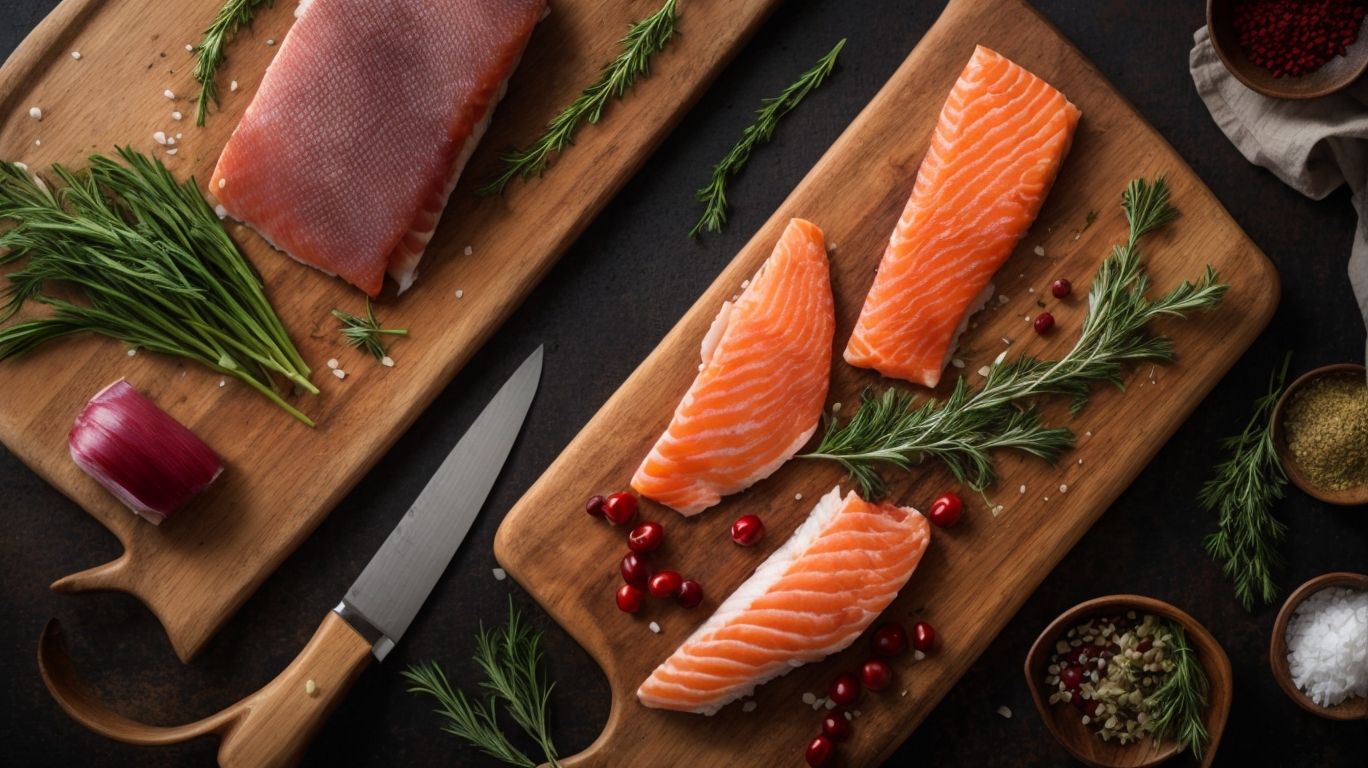
Credits: Poormet.Com – Jeffrey Wilson
Various types of fish, both lean and fatty, can be successfully cooked from frozen, offering versatility and convenience for home cooks.
Lean fish varieties such as cod, haddock, and tilapia are excellent options for preparing dishes straight from the freezer. Their mild flavors and firm textures make them ideal for baking, broiling, or grilling without the need for thawing. On the other hand, fatty fish like salmon, mackerel, or sardines maintain their rich flavors and textures even when cooked from frozen, perfect for pan-searing or roasting.
The beauty of utilizing frozen fish lies in its extended shelf life and the ability to retain essential nutrients and freshness. Frozen fish often comes conveniently portioned, allowing for easier meal planning and reducing waste.
Lean Fish
Lean fish such as Alaskan salmon, known for its freshness and sushi-grade quality, can be cooked from frozen to deliver a delicious and healthy meal.
When selecting Alaskan salmon, look for fillets or portions that are individually vacuum-sealed to maintain their quality and prevent freezer burn. This fish is rich in omega-3 fatty acids, making it a nutritious choice for any meal. To cook from frozen, simply remove the portions you need and run them under cold water to thaw slightly before seasoning. For a simple and quick preparation, try baking the Alaskan salmon with a drizzle of olive oil, lemon, and fresh herbs for a flavorful dish in no time.
Fatty Fish
Fatty fish, when cooked from frozen, can achieve a crispy texture with minimal oil usage by following a simple cooking guide.
One of the key benefits of cooking fatty fish from frozen is that it helps preserve the natural flavors and nutrients of the fish, ensuring a delicious and healthy meal. Cooking fish from frozen can be a time-saving technique as it eliminates the need for thawing, making it a convenient option for busy weeknight dinners.
To prepare fatty fish from frozen, start by preheating your oven to the recommended temperature. While the oven is heating up, prepare a baking sheet lined with parchment paper or aluminum foil to prevent sticking.
Next, remove the frozen fish from its packaging and place it directly on the prepared baking sheet. Drizzle a small amount of olive oil or your preferred cooking oil over the fish to help it crisp up in the oven.
Shellfish
Shellfish, such as breaded fish seasoned with Dijon mustard and panko breadcrumbs, can be cooked from frozen to create a flavorful and satisfying dish.
When cooking shellfish from frozen, it’s important to thaw them properly before beginning the preparation. Start by placing the frozen shellfish in the refrigerator overnight or in a bowl of cold water for quicker thawing. Once thawed, you can proceed with coating the shellfish in a mixture of Dijon mustard and dipping them in crispy panko breadcrumbs for a delightful crunch.
For an extra burst of flavor, consider adding some finely chopped fresh herbs like parsley or dill to the breadcrumb mixture. The combination of the tangy mustard and the crispy coating elevates the natural sweetness of the shellfish, making it a delectable treat for your taste buds.
How to Properly Thaw Frozen Fish?
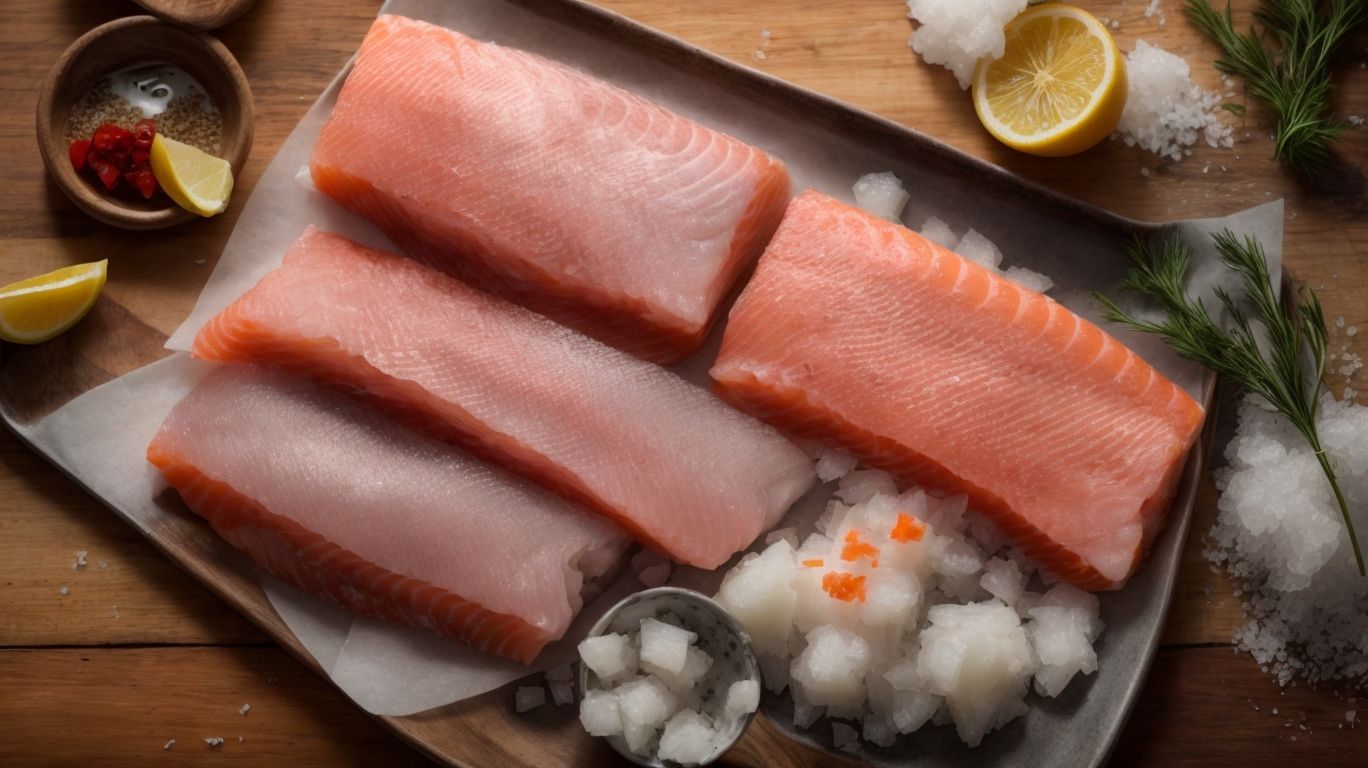
Credits: Poormet.Com – Peter Nelson
Properly thawing frozen fish is essential to maintain its quality and ensure safe consumption, with methods like refrigerator thawing, cold water thawing, and microwave thawing available.
When thawing frozen fish in the refrigerator, place the wrapped fish on a plate and allow it to defrost gradually. This method is the safest and most recommended as it maintains the fish’s quality.
For thawing in cold water, seal the fish in a leak-proof bag and submerge it in cold water, changing the water every 30 minutes.
For microwave thawing, use the defrost setting and follow the microwave’s instructions, rotating and checking the fish frequently to prevent cooking.
Refrigerator Thawing
Refrigerator thawing is a safe and gradual method for thawing frozen fish, allowing it to thaw at a controlled temperature to preserve its quality.
When thawing fish in the refrigerator, it’s important to place the fish in a leak-proof container or zip-top bag to prevent any drips. This helps in maintaining the cleanliness of the refrigerator and prevents cross-contamination with other foods. By keeping the fish in its packaging, you also keep its natural juices intact, preserving its flavor and texture.
Regularly checking the refrigerator’s temperature is crucial during the thawing process to ensure that it stays consistently below 40°F (4°C). This temperature range inhibits the growth of harmful bacteria that could lead to foodborne illnesses. You can use a refrigerator thermometer to monitor the internal temperature and make adjustments as needed.
Cold Water Thawing
Cold water thawing involves submerging frozen fish in a water reservoir to speed up the thawing process while maintaining food safety standards.
When using the cold water thawing method, it’s crucial to ensure that the fish is sealed in a watertight package to prevent any water from seeping in. This technique is effective in speeding up the thawing process because water is a better conductor of heat compared to air, allowing for quicker and more even thawing.
Make sure to regularly change the water in the reservoir every 30 minutes to prevent the temperature from rising to a level where bacteria can multiply. Thoroughly inspect the fish after thawing to confirm that it has fully defrosted before cooking to enjoy a safe and delicious meal.
By following these guidelines, you can efficiently thaw frozen fish while maintaining its quality and taste.
Microwave Thawing
Microwave thawing offers a quick method for thawing frozen fish, but precautions must be taken to preserve moisture and flavor during the process.
When using the microwave to thaw fish, it is essential to remember that fish is delicate and can easily overcook or dry out if not handled properly. To maintain the moisture and flavor of the fish, consider wrapping it in a damp paper towel or placing it in a microwave-safe dish covered with plastic wrap. This will help create a steamy environment, preventing the fish from becoming tough or rubbery.
Methods of Cooking Frozen Fish
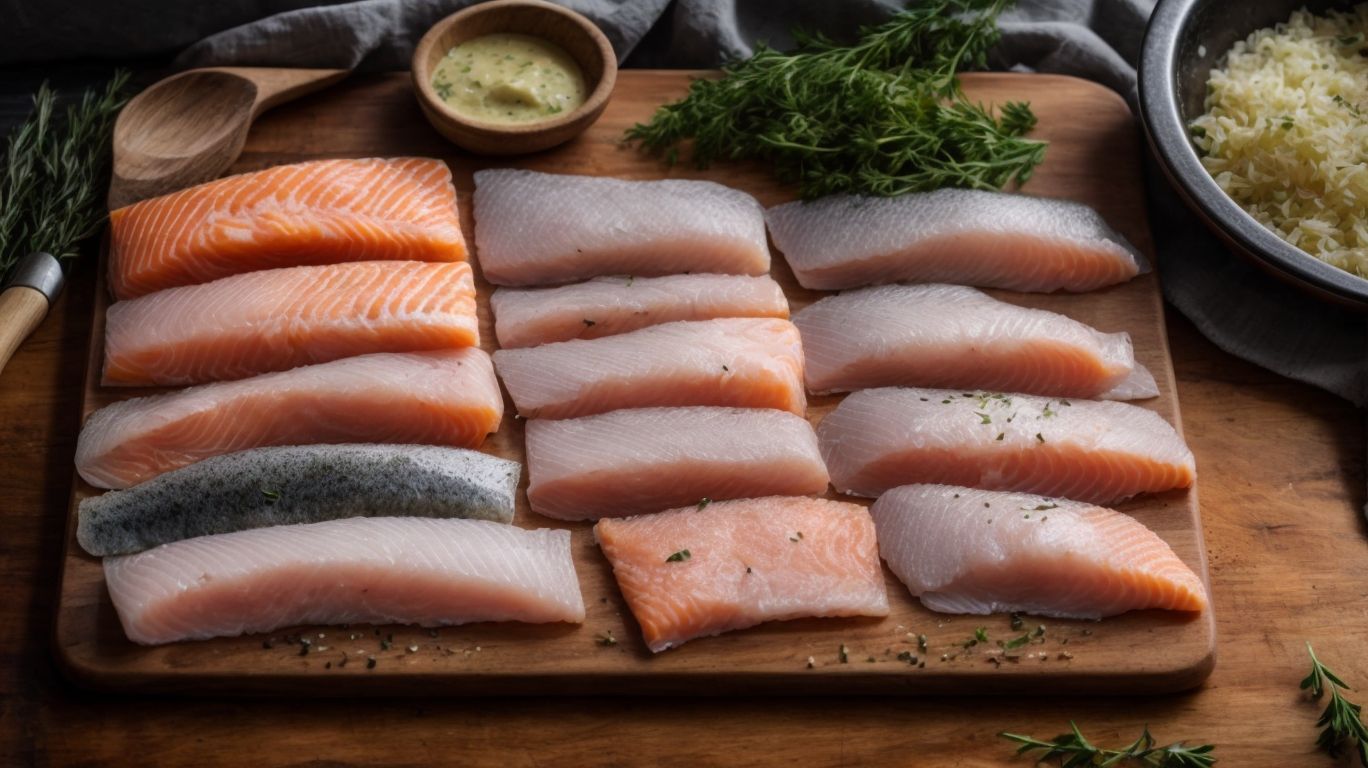
Credits: Poormet.Com – Wayne Brown
Cooking frozen fish can be accomplished using various methods, each offering unique layers of flavor, optimal cooking times, and desired textures for a delicious meal.
One popular method for cooking frozen fish is baking. This technique involves placing the fish in the oven, resulting in a moist interior and crispy exterior. Grilling is another flavorful option, providing a smoky taste to the fish. Pan-frying gives a crunchy texture, while poaching ensures a delicate and moist outcome. Steaming is a healthy choice, preserving the fish’s natural flavors. Broiling quickly cooks the fish with a nice char. Each method offers versatility in creating a delectable dish to suit different tastes and culinary preferences.
Baking
Baking frozen fish in the oven can yield excellent results when using a cooking thermometer to monitor internal temperature, preheating the oven, and seasoning the fish for optimal flavor.
Begin by preheating your oven to 375°F to ensure even cooking throughout the fish.
While the oven is preheating, take your frozen fish out of the freezer to thaw slightly and then pat it dry with paper towels to remove excess moisture.
Season your fish with a blend of olive oil, lemon juice, garlic powder, salt, and black pepper for a delicious flavor profile.
Place your seasoned fish on a lined baking sheet and insert a cooking thermometer into the thickest part to monitor the internal temperature.
Grilling
Grilling frozen fish offers a quick and flavorful option, creating a delicious charred layer with minimal cooking time and oil usage for a satisfying texture.
When grilling frozen fish, ensure to preheat the grill to medium-high heat to achieve that perfect char. Opt for thick fillets or steaks to prevent overcooking. A handy tip is to brush the fish with a light coat of olive oil before grilling to prevent sticking and enhance flavor. Season generously with your favorite herbs and spices like lemon zest, garlic powder, or a sprinkle of paprika for an extra kick. Keep a close eye on the cooking time, usually around 4-6 minutes per side depending on the thickness of the fish, to avoid dryness and ensure moist flaky perfection.
Pan-Frying
Pan-frying frozen fish in a skillet can result in a beautifully browned exterior, achieved by flipping the fillets at the right time and using minimal oil for a crispy finish.
To start pan-frying frozen fish, ensure your skillet is preheated over medium-high heat with a thin layer of oil coating the pan. This will help form that desirable golden crust. As you gently place the frozen fillets in the skillet, try not to overcrowd the pan to allow for even cooking. Let the fillets sizzle for a few minutes before contemplating the initial flip.
- Flipping plays a significant role in achieving the perfect crust. Use a spatula to delicately flip the fillets when the bottom side is golden brown, typically after 3-4 minutes.
- Aim for precision and avoid excessive flipping to maintain the crust’s integrity. The crispy texture will delight your taste buds.
Poaching
Poaching frozen fish in a stovetop steamer with a gentle simmer and lid covering can help preserve moisture, enhance flavors, and achieve perfect doneness.
When poaching frozen fish, it is crucial to ensure that the liquid in the steamer doesn’t come to a boil to prevent the fish from overcooking or drying out. The gentle steam surrounding the fish delicately cooks it throughout, resulting in a tender and flavorful dish.
By maintaining the correct temperature, usually around 140-160°F (60-70°C), the fish slowly cooks in the infused liquid, absorbing the subtle flavors of any herbs, spices, or citrus added to the poaching liquid.
For optimal results, it is recommended to use a flavorful broth or a mixture of water and wine for poaching, creating an aromatic and delicious cooking environment that elevates the taste of the fish.
Steaming
Steaming frozen fish in an electric steamer with a dedicated basket or tray allows for even cooking, proper seasoning, and optimal air circulation to achieve a flavorful and tender dish.
Using an electric steamer ensures that the fish cooks uniformly, preventing one part from being overdone while another remains undercooked.
The consistent steam distribution helps the fish retain its moisture, preserving its natural flavors. Seasoning can be conveniently done by adding herbs, spices, or citrus slices directly to the steaming water or onto the fish itself. The steamer basket or tray not only elevates the fish, allowing the steam to circulate freely but also makes it easy to remove the cooked fish without breaking it. To add extra flavor, consider using a mixture of broth and wine in the steaming liquid, resulting in a deliciously moist and fragrant fish dish.
Broiling
Broiling frozen fish can result in a beautifully browned exterior, but careful monitoring is required to prevent undercooked or overcooked fish, ensuring optimal results.
When broiling frozen fish, the key is to preheat your broiler for about 10 minutes to ensure it’s hot enough for that perfect sear.
Constant monitoring is essential during the cooking process to adjust the rack position if needed and avoid burning.
For fillets, a thickness of about 1 inch is recommended to ensure even cooking. It’s crucial to brush the fish with olive oil or a marinade of your choice before sliding it under the broiler to add flavor and moisture.
Target an internal temperature of 145°F for a flaky and delicious finish. Remember to check the fish regularly to achieve the desired golden-brown color without overcooking.
Tips for Cooking Frozen Fish
When cooking frozen fish, it’s essential to follow specific tips to ensure delicious results, such as using high heat, seasoning before cooking, using a timer, checking for doneness, and adding extra moisture when needed.
Using high heat when cooking frozen fish is crucial for a quick and efficient cooking process. This helps to seal in the juices, keeping the fish moist and flavorful. Before you start cooking, make sure to season your fish generously with your favorite herbs and spices to enhance its taste profile.
Setting a timer is a handy trick to achieve perfectly cooked fish. Different types of fish require varying cooking times, so it’s important to follow a recipe or guidelines. To check if the fish is done, insert a fork into the thickest part – the flesh should be opaque and flake easily.
If you find your fish drying out during cooking, don’t hesitate to add a splash of water or broth to maintain the moisture levels. This simple adjustment can make a significant difference in the final texture and flavor of your dish.
Use High Heat
Utilizing high heat when cooking frozen fish can help achieve a crispy exterior and proper browning, enhancing the texture and flavors of the dish.
In terms of managing heat levels for frozen fish, starting with a preheated pan is essential to ensure immediate searing and prevent sticking. Heating oil until it shimmers slightly signals that it’s ready for the fish, promoting that perfect golden crust. Proper flipping techniques are crucial to maintain a crispy texture throughout. Remember not to overcrowd the pan, allowing the fish to sear rather than steam. Adhering to browning guidelines helps caramelize the surface, imparting depth and richness to the overall flavor profile.
Season Before Cooking
Seasoning frozen fish before cooking is crucial for enhancing its flavor profile, ensuring that the seasonings penetrate the fillets and complement the natural taste of the fish.
When seasoning frozen fish, consider using a blend of herbs and spices like garlic powder, paprika, or dill to elevate the taste. The key is to allow the seasoning mix to sit on the fish for at least 15-20 minutes before cooking to let the flavors meld.
To help the seasonings adhere better, lightly coat the fillets with a thin layer of olive oil or melted butter. This not only aids in seasoning retention but also adds a pleasant richness to the dish. By following these simple steps, you can achieve a well-seasoned and delicious fish dish that will impress your taste buds!
Use a Timer
Using a timer when cooking frozen fish helps ensure precise cooking times, optimal texture, and safe internal temperatures, resulting in perfectly cooked fillets every time.
Setting a timer is crucial for cooking frozen fish as it prevents overcooking or undercooking. By following recommended timer settings based on the thickness of the fish fillet, you can achieve consistent results with a beautifully flaky texture.
An essential tool in this process is a food thermometer to ensure that the fish reaches a safe internal temperature of at least 145°F (63°C). This guarantees that harmful bacteria are destroyed, making your dish safe to consume.
Check for Doneness
Checking for doneness by monitoring the internal temperature of frozen fish ensures that the fillets are cooked to perfection, yielding delicious and safe results for consumption.
When preparing frozen fish, using a cooking thermometer is crucial in ensuring that the fish reaches the appropriate temperature to be fully cooked. This method not only guarantees a delicious outcome but also plays a vital role in food safety.
For most types of frozen fish, the recommended internal temperature is 145°F (63°C) to kill any harmful bacteria and ensure that the fish is thoroughly cooked. By measuring the temperature accurately, you can avoid overcooking, which can lead to a dry and less flavorful dish.
Once the fish reaches the desired temperature, it should have a firm texture and opaque appearance. Always remember that consuming undercooked fish can pose health risks, so thorough cooking is essential to enjoy a safe and delightful meal.”
Add Extra Moisture
Adding extra moisture during the cooking process of frozen fish can help preserve flavor, create a delicious outer layer, and maintain moisture levels within the fillets for a delightful culinary experience.
One of the key benefits of incorporating additional moisture while cooking frozen fish is the enhancement of flavors. By introducing extra liquids, such as lemon juice, broth, or even a splash of white wine, you can infuse the fish with subtle yet rich flavors that penetrate the entire fillet.
This added moisture also plays a crucial role in creating a flavorful outer layer when cooking fish. It helps to form a delicate crust while keeping the insides tender and juicy, providing a contrasting texture that elevates the overall dining experience.
Retaining moisture during the cooking process ensures that the fish remains succulent and juicy, preventing dryness and preserving the delicate texture of the fillets. This results in a dish that is not only visually appealing but also incredibly tasty and satisfying.
Frequently Asked Questions
How to Cook Fish From Frozen?
To cook fish from frozen, start by preheating your oven to 375 degrees Fahrenheit. Place the frozen fish in a baking dish and season it with your desired herbs and spices. Bake for 20-25 minutes, or until the fish is cooked through and flakes easily with a fork.
Can I cook fish from frozen on the stovetop?
Yes, you can cook fish from frozen on the stovetop. Simply place the frozen fish in a pan with some oil and cook over medium heat, flipping occasionally, until the fish is cooked through. This method usually takes 10-12 minutes.
What is the best way to defrost fish before cooking?
The best way to defrost fish is to place it in the refrigerator overnight. If you need to defrost it faster, you can also place the fish in a sealed plastic bag and submerge it in cold water for 30-45 minutes.
Can I use the microwave to defrost fish?
It is not recommended to defrost fish in the microwave as it may cause uneven cooking or even cook the fish in some areas. It is best to use the refrigerator or cold water method for defrosting.
What types of fish can be cooked from frozen?
Most types of fish can be cooked from frozen, including salmon, tilapia, cod, and halibut. However, some thicker or larger cuts of fish may take longer to cook from frozen.
Are there any safety precautions I should take when cooking fish from frozen?
Yes, it is important to make sure the fish reaches an internal temperature of 145 degrees Fahrenheit to ensure it is fully cooked. Use a food thermometer to check the temperature and if necessary, continue cooking for a few more minutes.

